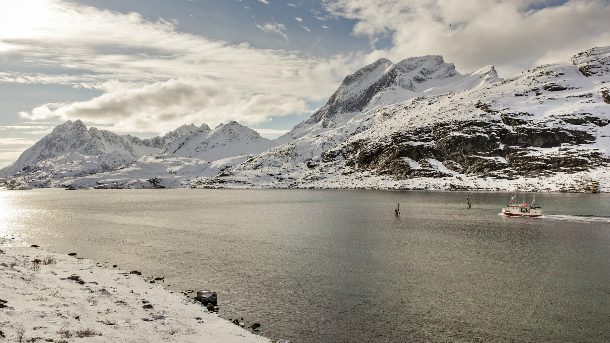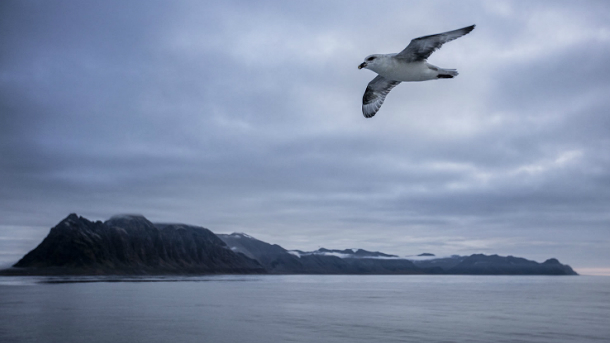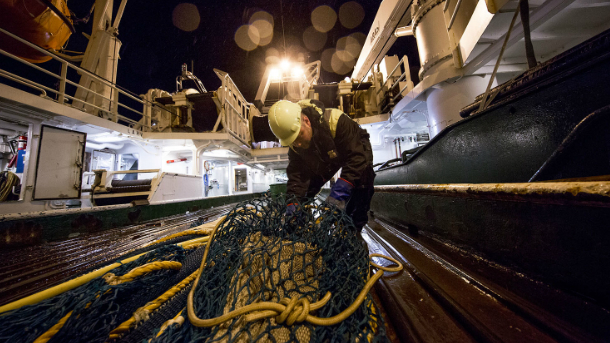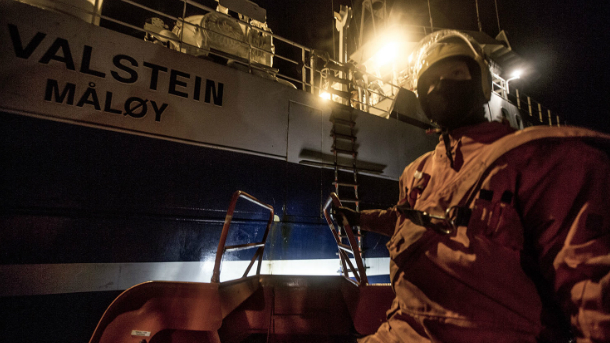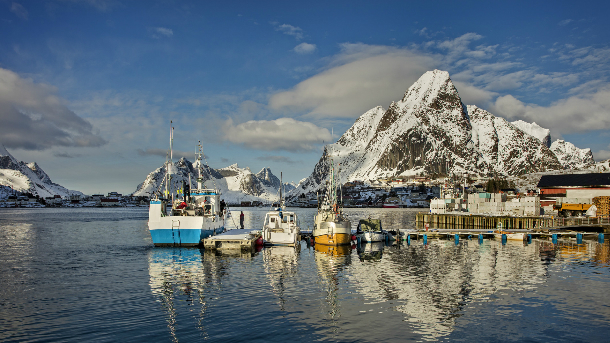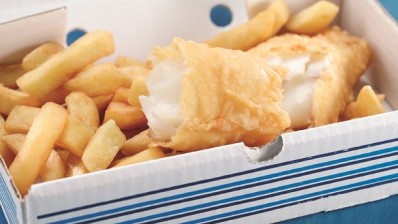Protecting the produce: How Greenpeace and Norway saved Arctic cod
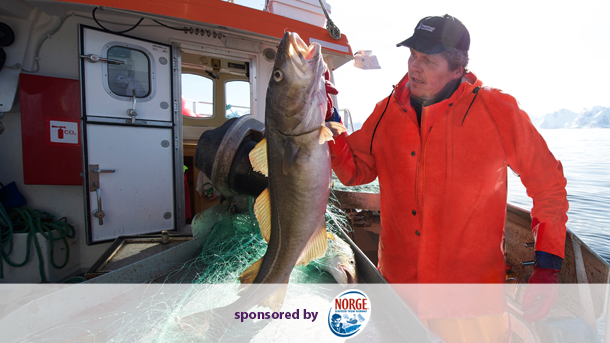
Where does your business get its fish from? If it’s Norway, you’re not alone.
Arctic cod from Norway is among the most popular fish products in the UK, with Norwegian cod and haddock accounting for up to 70 per cent of the UK’s white fish consumption.
The classic white fish is also often seen as one of the best quality and most sustainable, thanks to the Scandinavian country’s top-end fisheries management and cold, clear waters.
Not only used for the standard fish and chips fare, high-quality fish – cod and haddock ‒ from the Norwegian Barents Sea and around Svalbard regularly passes through markets such as Billingsgate, ending up in the kitchens and on tables of some of the best restaurants in the UK. The quality of Norwegian fish in general is much-respected among chefs, with Michel Roux Jr, Daniel Galmiche and Simon Hulstone among some of the most high-profile users of other fish including skrei and fjord trout.
So when Greenpeace launched a campaign this year, telling of destruction of the seabed and asking for a halt on Arctic cod fishing, people were worried. ‘Storytelling’ might be a buzzword in the restaurant industry, but this sounded like a chapter too far.
But is our demand for Norwegian cod really pushing trawlers into new, pristine territory and potentially damaging the sea bed and the eco-system for years to come?
This far, no further?
Cod vessel in Lofoten, Norway (MSC)
The issues began when, in April this year, the conservation giant Greenpeace launched a campaign titled ‘This Far, No Further’.
It aimed to stop trawling from what it called new areas of the Arctic, found in the northern areas of water around Svalbard and the Norwegian Barents Sea.
These areas are usually covered in ice, but are now regularly opened thanks to the seasonal and growing melting of the polar ice caps – a retreat of up to 240km between 1979 and 2010, according to Greenpeace.
In the campaign, Greenpeace tracked the GPS data from Norwegian ships, and claimed: “Investigations have shown industrial fishing fleets using destructive bottom trawling are invading previously pristine areas of the Barents Sea in the Norwegian Arctic…Fishing brings with it the threats of habitat degradation and bycatch, potentially wiping out marine life and putting this whole fragile ecosystem at risk.”
In response, the group initially called for a flat-out ban of trawling vessels entering the affected area, arguing that fishing would destroy the newly-revealed ecosystem.
And yet, Norway’s deserved pride in the management of its Barents Sea fisheries, and economic reliance on fishing, meant that negotiation was required to counter this initially extreme measure.
The Barents Sea is an extremely productive fisheries area, and Norway takes very seriously its responsibility to ensure that this area of ocean receives the best environmental protection, without compromising the livelihoods of those who rely on its crucial catch.
An agreement was becoming increasingly necessary.
Uncharted waters?
Svalbard (MSC)
Although extensive studies exist of the sea bed around the north of Norway and its incredible 25,000km-long (15,600 mile) coastline ‒ thanks to Norwegian seabed researchers MAREANO ‒ Greenpeace initially argued that these new areas of the Barents Sea seabed were as yet uncharted, and should remain off limits.
Animals found in the area include blue, beluga, and humpback whales, seabirds, fish, and seals, and much of the sea floor is thought to be home to rare, historic and vulnerable species such as decades-old cold-water corals, sea pens, and cold water sponges.
Of particular concern from Greenpeace were the so-called ‘bottom trawler’ vessels, the much-maligned trawling method using weighted nets, which, the campaign alleges, roll along the sea floor and “crush everything in their path”.
But now, an agreement made between the Norwegian fishing industry – including the Norwegian Fishing Vessel Owners Association (Fiskebåt) ‒ and Greenpeace has effectively reached the compromise both parties have sought, ensuring that fishing in the Norwegian Barents Sea region can continue, without irreversibly damaging the area’s biodiversity.
Superlative science
The practicality of the solution isn’t a surprise to those involved, given the much-documented extent of Norway’s regulation.
As James Simpson from the Marine Stewardship Council (MSC) – which certifies all the major Barents Sea trawl fisheries in the Norwegian Barents Sea ‒ says: “The only reason that Greenpeace can even highlight this as an issue is because Norway has pretty much the best fisheries science in the world.
“Of all the countries in the MSC programme, Norway consistently scores the highest on management, which is a big claim – they’re scoring easily 95 out of 100. The management is world-class. We [at the MSC] talk about getting fisheries towards international best practice, and Norway is setting the bar.”
Ultimately, Norway’s own research into of its existing waters means that it has established a precedent of evaluating the impact of fishing on the environment, and can predict with some clarity how much damage – if any – fishing will make.
As Jack-Robert Moller, UK director of the Norwegian Seafood Council (NSC), explains: "Fishing is part of the heritage of Norway and Norwegians. We take it very seriously and it is our duty to protect it for future generations."
Counting the catch
The Norwegian Coastguard regularly boards ships without notice to inspect them (MSC)
This culture of monitoring is also one of the key drivers in the cooperation on this issue, ensuring as it does that fishing vessels can be trusted to stick to the laws surrounding fishing, movement, and reporting of catches.
For example, ships are fitted with GPS, allowing them to be tracked everywhere, and their catches are closely monitored to ensure they match the boat’s reported movements.
The Norwegian Coastguard operates a no-nonsense boarding policy on all vessels in its waters, having carried out 2,000 boat, stock, and net inspections in the past year alone.
Similarly, cod vessels in Norway operate under a no-discard basis, meaning they are forbidden to throw back any animals or fish that are not part of the main catch back into the sea.
The whole of any given catch must be landed on-shore to be counted and documented, and any species or plants found are recorded and counted against the haul.
This means targeted and highly-monitored fishing is the only way Norwegian vessels can operate.
No-go zones
To put it simply, thanks to this reporting culture, when negotiating, the regulators and fishermen were able to consider the logs for all of their boats, and identify areas of the Norwegian Barents Sea that had already been regularly trawled above 76 degrees north.
Some were even found to have been trawled for more than 3,000 hours over the past 12 years, with evidence that ships had – on rare occasions – entered these northern waters as early as the 1970s.
Because areas containing coral or other species are no-go areas for cod fishing, it’s reasonable to assume that these already-heavily-trawled areas are already safe, with little more than mud and sand on the sea bed.
Even more important, it is not in fishermen’s interest to seek cod in areas of ocean that may contain the coral or species that Greenpeace is seeking to protect.
As Simpson explains: “One of the consequences of catching your trawler on coral, is that is breaks the net. Tens of thousands of pounds of damage. You’ll only do that once. And if you do, you then tell everyone else where it is.
“Equally, if you catch [protected species such as] sponges in the same net, you’ll never sell the cod, as it damages the fish. Since the coastguard knows where you’re trawling, if you come in without any fish, they’ll start to ask rather pointed questions as to why.”
Cod not coral
Right now, there is already a 12 nautical mile exclusion zone immediately around Svalbard, and in waters further north of 76 degrees, there is what has been described as an ‘A-shaped’ permitted area, with everything else temporarily closed in light of this campaign.
The new investigation by MAREANO to map the new areas may take years (15 years is the standard), but it will still ultimately work towards a time when areas of the new waters can be opened up, rather than leaving them – perhaps unnecessarily ‒ shut down forever.
This has reduced the trawling exclusion zone to a more realistic area, in a compromise designed to allow the marine life to thrive without severely restricting vessels from key fishing zones.
A statement on the issue from Fiskebåt reads: “Fiskebåt has agreed that from the 2016 season the catching sector will not expand their cod fishing activities with trawl gear into those areas where regular fishing has not taken place before. This is a precautionary measure until through initiatives…in future years will be determined by improved knowledge replacing the need for this precautionary approach.”
The agreement has also restricted any trawling at depths exceeding 1000 metres, and a ban on trawling near 18 already-identified coral reefs.
Any sponges and corals reported over a certain threshold level must be reported, with all vessels within the affected area required to move two nautical miles away before resuming their trawl.
The future of your fish dish
Ultimately, this painstaking agreement means that those concerned with the sustainability, traceability and eco-friendly nature of their produce – including chefs, caterers and hotel food and beverage managers ‒ can continue to trust that their cod has damaged neither the environment nor the livelihoods of those who fish it.
In a world where customers increasingly demand evidence of traceable produce, and enjoy learning the story of their food, that is a reassuring thought – and an entirely necessary step to ensure that the much-used Norwegian waters remain sustainable for future generations.
Of the ‘bottom trawlers’ causing so much controversy, Simpson says: “Bottom trawlers get an awful lot of bad press, [as they are] what is called high-impact fishing gear, and they will impact the ocean floor if there is something there to be damaged.”
“But there’s this sort of vision in some circles that the ocean floor is this pristine Eden-type garden, just waiting for humans to come and ruin it [Greenpeace’s initial campaign called the Barents Sea a ‘wonderland under ice’] and yet much of it is just sand and mud.
“The important thing is to recognise what is there, if it’s there, and protect that really carefully. Which is what the Norwegians are doing.”
This BigHospitality feature was sponsored by the Norwegian Seafood Council:
Geographically, Norway is one long coastline. So it's no surprise that we're a fishing nation. It's in our genes after all; our fathers made their living at sea, and as children we grow up eating it. At the Norwegian Seafood Council, our job is to tell this story and why we are one of the world's biggest and most sustainable producers of seafood.
